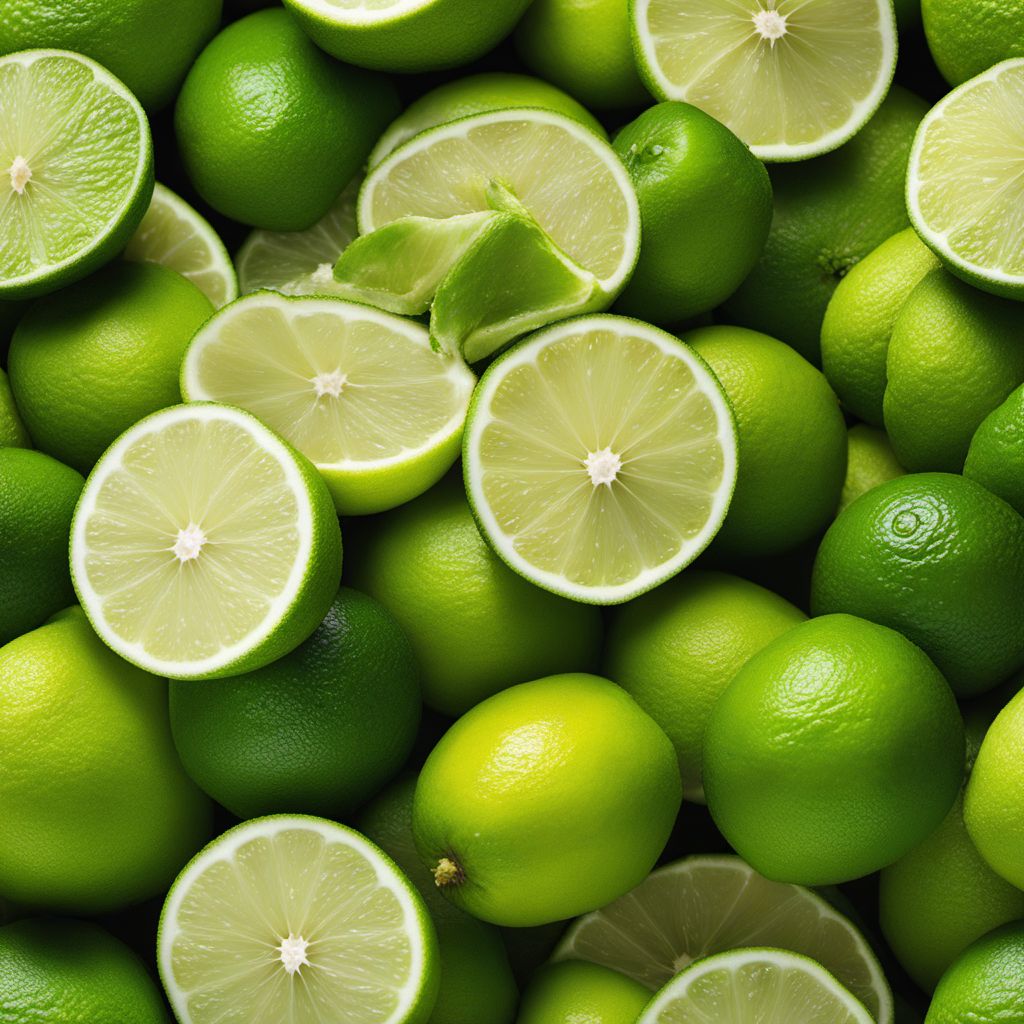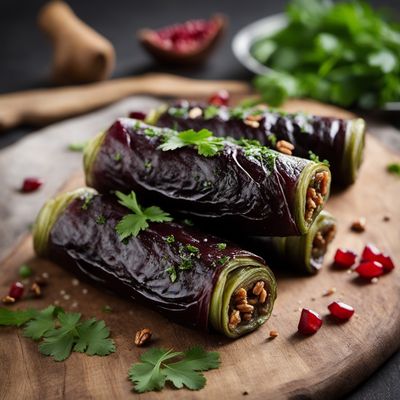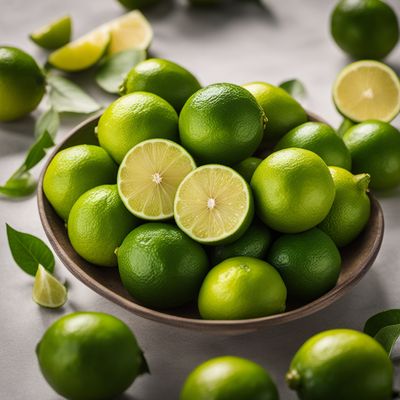
Ingredient
Tahiti limes
The Zesty Jewel: Unleashing the Vibrant Flavors of Tahiti Limes
Tahiti limes are small to medium-sized citrus fruits with a smooth, thin, and bright green skin. The flesh of the lime is pale green and juicy, offering a tangy and acidic flavor that is less intense than other lime varieties. Tahiti limes are known for their high juice content, making them ideal for squeezing and extracting fresh lime juice. The texture of the lime is soft and tender, allowing for easy juicing and zesting. When cut open, the lime releases a refreshing citrus aroma that invigorates the senses.
Origins and history
Tahiti limes are believed to have originated in Southeast Asia and were introduced to the Western world by Spanish and Portuguese explorers. They are named after the island of Tahiti, where they were first cultivated on a large scale. Tahiti limes quickly gained popularity due to their versatility and ability to thrive in various climates. Today, they are widely cultivated in tropical and subtropical regions around the world, including Mexico, India, Brazil, and the United States.
Nutritional information
Tahiti limes are a good source of vitamin C, providing a boost of antioxidants that support immune health. They also contain small amounts of other essential vitamins and minerals, including potassium and folate. With only about 20 calories per lime, they are a low-calorie ingredient that can add flavor and zest to dishes without significantly impacting overall calorie intake.
Allergens
There are no known allergens associated with Tahiti limes.
How to select
When selecting Tahiti limes, look for fruits that are firm and heavy for their size, indicating juiciness. The skin should be smooth and free from blemishes or soft spots. Avoid limes with wrinkled or discolored skin, as these may indicate age or poor quality. Additionally, choose limes that have a vibrant green color, as this is a sign of ripeness and optimal flavor. If possible, give the lime a gentle squeeze to ensure it feels firm and not overly soft.
Storage recommendations
Tahiti limes should be stored at room temperature if they will be used within a few days. For longer storage, place them in a plastic bag or container and store them in the refrigerator. Properly stored limes can last for up to two weeks. Before using, rinse the lime under cool water and pat dry. To extract the juice, roll the lime on a hard surface to loosen the juice sacs, then cut and squeeze as needed. To zest the lime, use a fine grater or zester to remove the outer layer of the skin, being careful to avoid the bitter white pith.
How to produce
Tahiti lime trees can be grown in suitable climates, such as tropical or subtropical regions. They require well-draining soil, regular watering, and adequate sunlight to thrive. If you have the space and climate conditions, consider planting a Tahiti lime tree in your garden or patio. However, keep in mind that it may take a few years for the tree to bear fruit.
Preparation tips
Tahiti limes are incredibly versatile and can be used in both sweet and savory dishes. They are commonly used to add a tangy and refreshing flavor to beverages such as cocktails, lemonades, and iced teas. Tahiti lime juice is a popular ingredient in marinades, dressings, and sauces, as it adds a bright acidity that enhances the overall flavor profile. The zest of Tahiti limes can be used to add a burst of citrus aroma and flavor to baked goods, desserts, and savory dishes. Additionally, Tahiti limes are a key ingredient in the famous Key lime pie.
Availability
Tahiti limes are cultivated in various regions around the world, including Mexico, India, Brazil, the United States (Florida and California), and other tropical or subtropical areas. They are commonly available in grocery stores, supermarkets, and farmers markets, especially in regions with a high demand for citrus fruits.
More ingredients from this category
Recipes using Tahiti limes » Browse all

Latvian-style Sea Urchins with Green Sauce
Baltic Delicacy: Latvian Sea Urchins with Zesty Green Sauce

Spicy Central American Noodle Salad
Fiery Fiesta Noodle Salad

Oysters Mosca
Savory Delights from the Sea: Oysters Mosca

Yaohon Stir-Fried Chicken with Vegetables
Savory Harmony: Stir-Fried Chicken Medley

Bashkir Chūkadon
Savory Fusion: Bashkir Chūkadon - A Delightful Blend of Japanese and Bashkir Flavors

Bosnian Lentil Stew
Hearty Bosnian Lentil Delight

Northern European Picadillo
Hearty Scandinavian Picadillo: A Fusion of Flavors

Lao-style Corn and Sausage Fried Rice
Savory Lao Fried Rice with Corn and Sausage

Stornoway Black Pudding with Caramelized Apples and Whisky Sauce
Savory Delight: Stornoway Black Pudding with Whisky-infused Apples

Melanesian Papadzules
Coconut-infused Melanesian Papadzules: A Tropical Twist on a Mexican Classic

Manchu-style Vegetable Noodles
Imperial Garden Noodles: A Manchu Twist on Vegetable Pasta

Georgian Eggplant Rolls with Walnut Filling
Savory Georgian Delight: Stuffed Eggplant Rolls with Nutty Goodness

